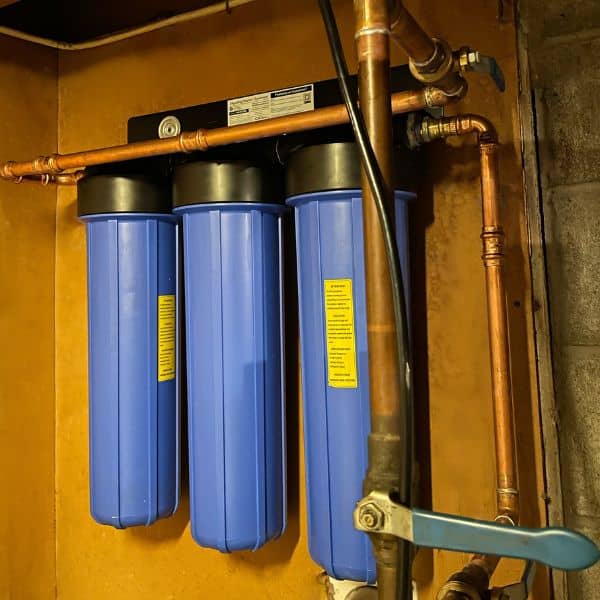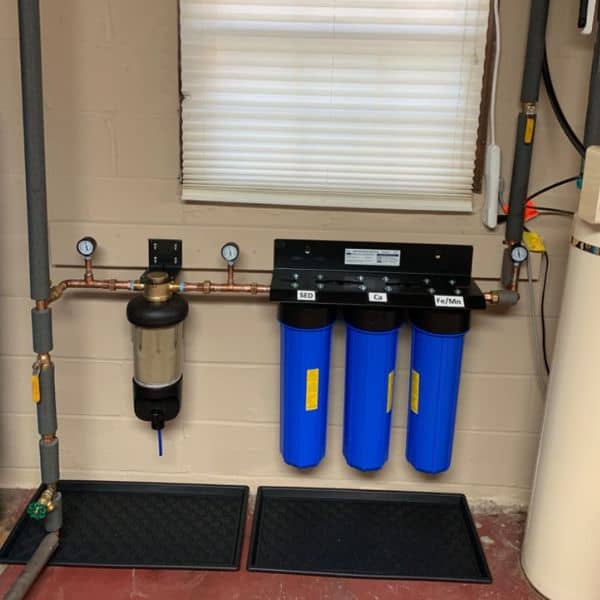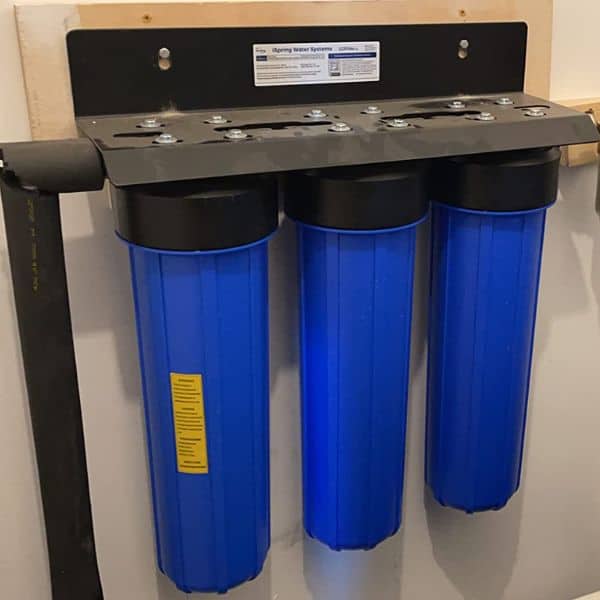What is a Water Sediment Filter, and How Does it Work?
A water treatment system is necessary to filter out impurities from the water. As the name suggests, a water sediment filter is designed to remove sediment from water, which can cause damage to pipes and appliances if left unchecked. Sediment refers to solid particles suspended in the water, such as sand, silt, and rust.
The sediment filtration process is relatively simple. Water flows through the filter media, which typically consists of layers of various materials designed to trap different-sized particles which often refers as microns. The larger particles are trapped near the surface of the filter media. In contrast, smaller ones penetrate deeper into the layers until the smallest pores eventually catch them in the deepest layer.
Sediment filters come in different forms – spun polypropylene and pleated paper cartridges are two common types. They need periodic cleaning or replacement depending on usage levels and the quality of the incoming water supply. Here is a list of some of the best whole house water filters for well water that you can check out.

Where to Install a Sediment Filter for Well Water?
If you rely on well water for your household’s daily use, you know how important it is to ensure the water is clean, safe, and healthy. One of the most effective ways to achieve this goal is by installing a sediment filter in your well system. Sediment filters are designed to remove visible impurities from the water, including sand, silt, rust particles, and other debris that can affect its taste, odor, and overall quality.
You need to consider many factors before installing a sediment filter for filtering well water. Choosing the right location for your filter is one of the most crucial decisions. You can choose the following locations:
Install sediment filter after the pressure tank
While there are various locations where you can install the sediment filter, one popular choice is after the pressure tank. Installing a sediment filter after the pressure tank has several advantages. First, it ensures that all the sediment and debris are trapped before they reach your faucets or appliances. This means you get clean water without worrying about clogged plumbing system or a damaged water heater caused by sediment buildup.
Moreover, installing a sediment filter after the pressure tank also allows for easy maintenance and replacement of filters. Since these filters require regular cleaning and changing, having them in an accessible location makes this task much easier.
Install the sediment filter after the pump
Another location for installing the sediment filter is after the pump. Installing a sediment filter after the pump has several advantages. First and foremost, this location allows the filter to capture any particles that may have been stirred up during pumping. You can improve your well water’s taste and clarity by filtering out these impurities before they reach your home’s plumbing system.
Another benefit of installing a sediment filter after the pump is that it protects downstream equipment from damage caused by trapped debris. Over time, the build-up of minerals and other particulate matter can clog pipes and appliances such as water heaters or washing machines.
Install the sediment filter before the storage tank
By installing the sediment filter before the storage tank, you also ensure that any sediments and particles that may have accumulated in the well are filtered out before reaching your home’s plumbing system. This helps improve water quality and extends the life of your plumbing fixtures by preventing buildup and corrosion caused by sediments.

Sediment Filter Installation: Step-by-Step Instructions
Installing a sediment filter may seem daunting, but with the right tools and basic knowledge, it can be done in just a few steps. A sediment filter is essential to any water filtration system as it helps remove large particles such as sand, dirt, and rust from your water supply.
Here are step-by-step instructions to help install a sediment filter in your home.
The first thing you need to do before starting your installation is to gather all the necessary equipment. Make sure you have everything you need:
- a sediment filter
- wrenches or pliers
- pipe cutter or hacksaw
- Teflon tape
- a bucket
- towels
Step 1:
Turn off the main water supply line to your house. Turning off the main water service line will prevent any water from flowing through the pipes while you’re working on the installation process.
Step 2:
Choose where you want to install the filter. The ideal location should be near where the main water line enters your home so that all incoming water is filtered.
Step 3:
Cut into the main water line using a pipe cutter or hacksaw. Install two compression fittings onto each end of the cut pipe. The fittings will help you connect the filter to the water line.
Step 4:
Spin down filter into the compression fittings. Tighten it with a wrench to ensure that it is in place.
Step 5:
Turn on the water supply to your house and check for leaks. If there are any leaks, tighten the fittings until they stop.

FAQs
Should you get a sediment filter for your well water?
If you’re one of the many homeowners who rely on well water for your daily needs, ensuring your water is clean and safe for consumption is essential. One way to do this is by installing a sediment filter in your well system. Sediment water filters can remove impurities from the water, such as sand, silt, and debris, that may accumulate in the well over time.
Installing a sediment filter ultimately depends on your specific water supply and usage. If you notice any visible sediment in your water or experience a decrease in flow rate, consider investing in a sediment filter. Additionally, living near an area with heavy construction or agricultural activities could increase the risk of contaminants entering your well system.
What happens if you don’t install a sediment filter on your well water?
If you rely on well water for your homes, you know how important it is to keep your water supply free from contaminants. One crucial device that helps safeguard against impurities is a sediment water filter system. This small but mighty tool works by trapping and removing dirt, sand, and other particles before they can enter your home’s pipes and appliances.
But what happens if you don’t install a sediment filter on your well water? Without this essential equipment, even seemingly clean and clear water can contain various types of debris that can wreak havoc on your plumbing system. Over time, these particles can accumulate in pipes and fixtures, leading to clogs or damage that may require costly repairs or replacements.
Should you install a sediment filter after your water softener?
Installing a sediment filter after your water softener can benefit your home’s plumbing system. While water softeners are designed to remove hard minerals like calcium and magnesium from your water, they do not necessarily remove other pollutants such as sand or dirt particles. On the other hand, Sediment filters are designed specifically to capture these types of contaminants and improve the overall quality of your household water.
By installing a sediment filter after your water softener, you will not only extend the lifespan of your plumbing fixtures but also protect them from potential damage caused by clogs or blockages. This can save you money on costly repairs in the long run. Additionally, suppose your area is prone to high levels of sediment contamination in its municipal supply or well water source. In that case, a sediment filter can prevent these materials from entering your home’s drinking water.
Conclusion
Like other types of filters, sediment filters for well water help ensure that your drinking water is clean and free from contaminants and sediment. These filters for well water should be installed in the well itself, after the pressure tank, after the pump, or before the storage tank. This will ensure that all of the water entering your house is clean and free from sediment.
Additionally, when installing a sediment filter for well water, ensure the shut-off valve is turned off and the filter is installed properly. If you need assistance, contact a professional well water company for help.

